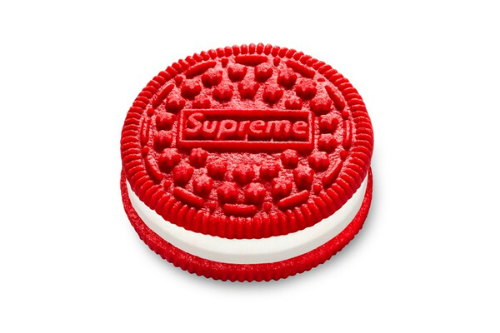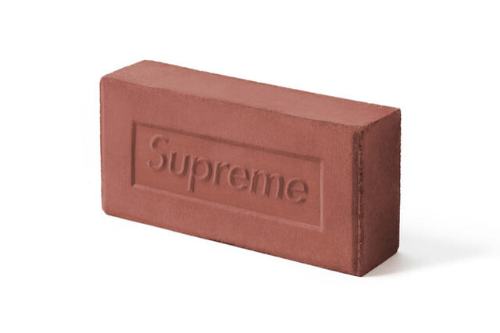Your United Way is Not Supreme
Founded in 1994, Supreme is a clothing and lifestyle brand that caters to hip hop and skateboard culture. While you may not be familiar with Supreme, the company is a global merchandising and branding superpower.
The company’s logo is distinct yet uncomplicated; the brand name sits in white, Futura Heavy Oblique text against a red background. While the logo may be simple, whenever Supreme puts its logo on a product, that product will be scooped up by consumers and resold online for many times its retail value. Last month, limited edition packets of red Oreos with the Supreme logo were released. The Oreos sold out almost instantly and were then quickly listed for sale on eBay for as much as $15,000. In 2016, a similar story played out when a limited number of Supreme-branded bricks were released, which then resold online for up to $1,000.
While it’s tempting to attribute the resale value of these inane products to the power of a well-developed logo, it’s important to remember that it isn’t the Supreme logo itself that sells these products; it’s the values that the logo represents.
Supreme super-fans are seeking out products that represent status and exclusivity. Make whatever judgments you will about people willing to pay $1,000 for a brick, but there’s no denying that Supreme has clearly tapped into and aligned itself with its customers’ values.
Having said that, the question becomes: What can United Ways learn from Supreme?
The answer isn’t that you should release United Way-branded Oreos. Instead, it’s that if your United Way wants to build a cult following, you need to build a brand that emulates the values of your donors.
Unlike Supreme, where customers are seeking status, your pool of potential donors is seeking powerful options for them to help change the world. The problem is that donors aren’t sold by lip service; you cannot just say that you’re changing the world – you need to provide proof. This is where most United Ways fail in developing a strong following.
Most United Ways do not have a clear direction. They are either focused on too many issues in the community to make a real impact, or they shift their impact focus from one issue to another year after year and are left without a sense of the change they’ve created in the community. Therefore, the brand of most local United Ways is inconsistent, and its value is unclear. This makes it difficult for donors to understand what it is United Way does and whether it truly aligns with their priorities.
To build a cult following, your United Way needs to be consistently aligned with your donors’ values. You need to double down on your impact, keep focused on specific goals to change your community, and show proof of your efforts.
While this may seem like a daunting order, there is a playbook for moving your United Way to a place where you are consistently creating deep impact in ways that no one else can. The playbook was developed by the consultants at Perspectives, and it helps United Ways adopt what is called the issue focus model.
While issue-focused United Ways don’t sell out of bricks or packets of Oreos, they do develop stronger donor followings. If you would like to learn more about how adopting an issue focus can help your United Way align with your donors’ values, raise more money, and create deeper community impact, we’d love to share our expertise with you. Send us an email at info@perspectives4uw.com to schedule a call and learn how your United Way can become a bit more like Supreme.


